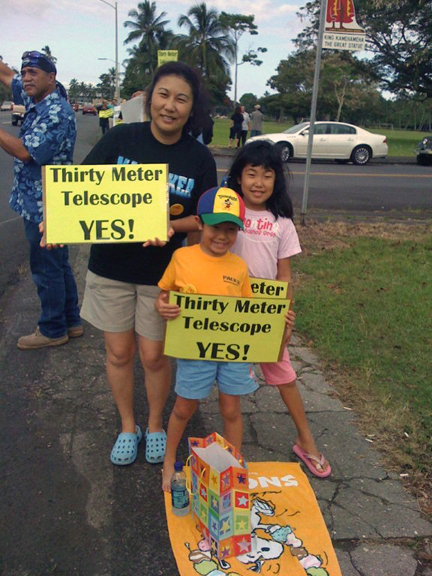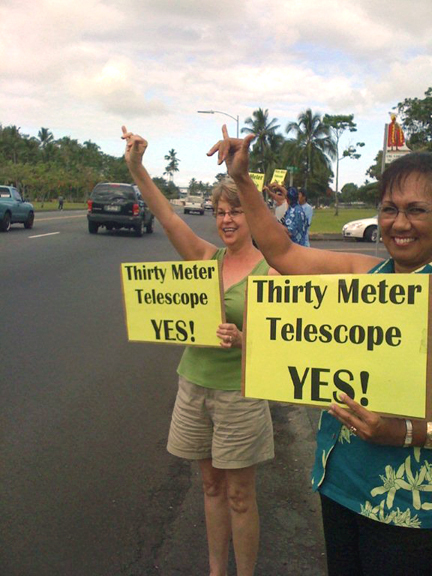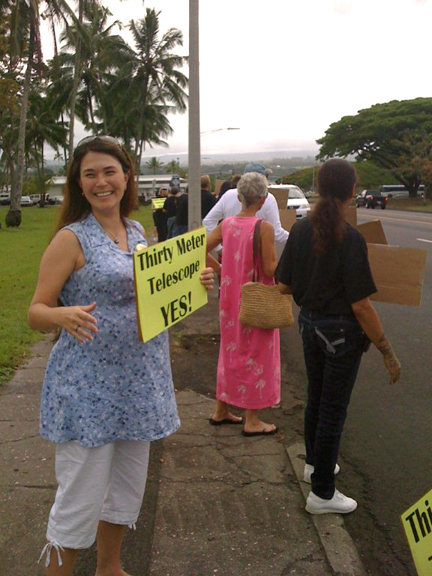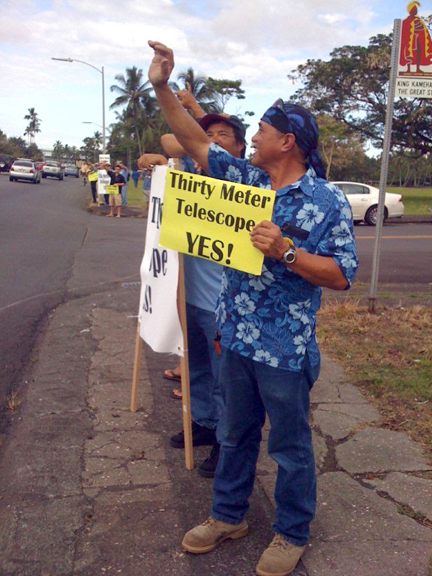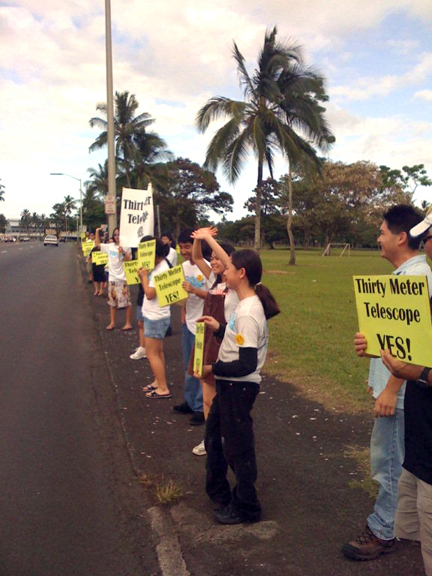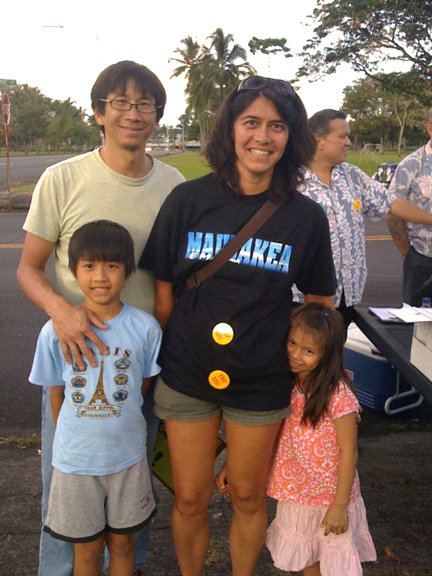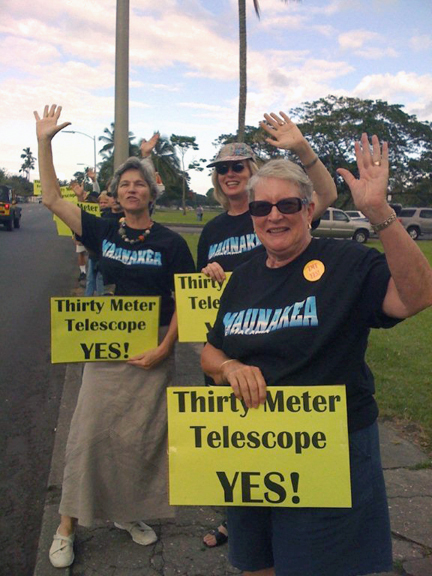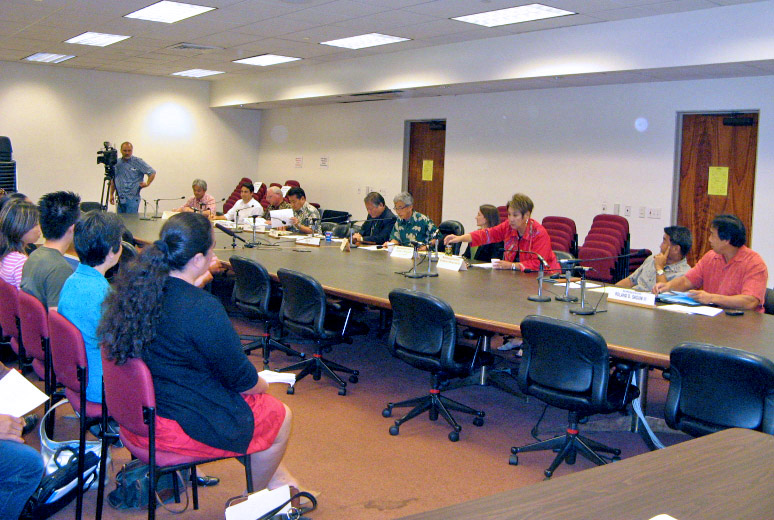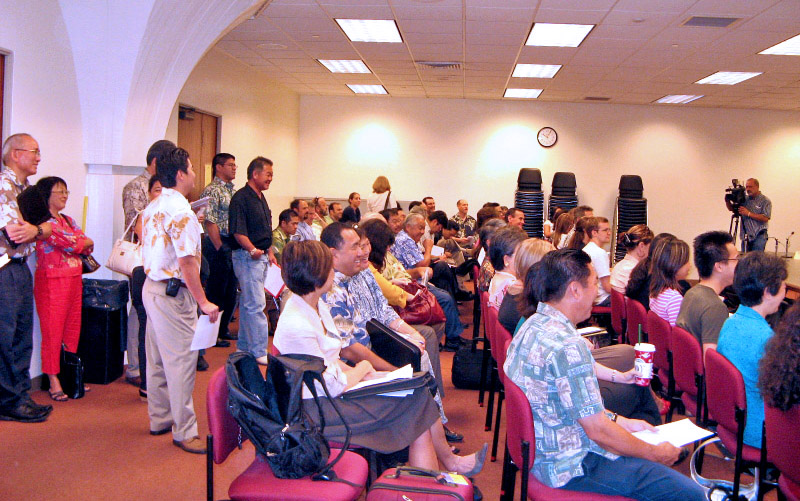Last night I sent in testimony supporting the Senate Bill that would give authority to the University of Hawai‘i at Hilo’s Mauna Kea Rangers to implement the Comprehensive Management Plan. (See below.)
The Senate passed the bill today, which was good.
But I kept on thinking about our Adopt-A-Class project, and wanting to make sure the Keaukaha Elementary School children can continue to go on excursions. Six hundred dollars adopts a class at Keauakaha Elementary School and sends the students on an excursion they would otherwise not take.
This is the third year we are seeking donations for our Adopt-A-Class program. At our website, you’ll see that a person or group can sponsor the whole excursion for one class ($600), or make a donation of $100 or more and contribute toward that class excursion.
If you can help, please look at the website and tell us which class you’d like to sponsor, and for what amount. There is more information about the process here.
In the meantime, here is the testimony I sent in. Among other things, it explains how we came to start the Adopt-A-Class program in the first place.
Dear Senators,
I am testifying in very strong support of HB 1174, HD3, SD2, the bill that enables us to malama Mauna Kea. Mauna Kea is our kuleana. We know what to do.
I am Richard Ha and I’m a native Hawaiian and a life-long Big Island farmer. We farm 600 acres at Pepeekeo. We have farmed bananas for 25 years and hydroponic vegetables for the last five. Over the years we have produced millions of pounds of food. We sell under the Hamakua Springs brand in the supermarkets. Nearly 70 of us work on the farm. We are concerned with food security and sustainability, especially since we sit out here on islands in the middle of the Pacific.
I would like to share with you how I came to be involved with issues related to Mauna Kea. Three years ago, when I was a new member of the Hawai‘i Island Economic Development Board, the Thirty-Meter Telescope people inquired about siting their telescope on Mauna Kea and the HIEDB formed a special TMT committee. I had strong feelings about the way it should be done: It should be done right! So I volunteered to sit on that committee. Before that, I was just a banana farmer.
When you talk about Mauna Kea you automatically talk about the Hawaiian culture, and when you talk about that, you end up in Keaukaha, the oldest Hawaiian Homes community on the Big Island (75 years). I found that the elementary school there is the center of the Keaukaha community.
I went to see Kumu Lehua Veincent, principal of Keaukaha Elementary School, with what I thought was a good proposal: “The TMT wants to come to the Big Island; what happens if we can convince them to give some kids from the community five, full-ride scholarships to the best schools in the nation?”
Kumu Lehua listened, and then he asked me: “What about the rest?” I could feel my ears getting hot and I felt kind of stupid. Yes, what about the rest?
Also, because the TMT had intentions to do things for the community, I expected the community would be receptive. Instead, I found that the Keaukaha people were very wary, wanting to know: “What do you really want?” They had been promised things many times before.
In the meantime, the TMT board decided to deal directly with UH system. But having met and liked the people in the Keaukaha community and elementary school, I went back again and again to talk story.
One day, I offered to sponsor an excursion to my farm. In the course of that trip, I asked Kumu: “Eh, where you guys go on excursion?” He told me they did not go. “No more money.” Instead, they walked around the neighborhood. I said: “What you mean?” He said, “The bus costs $300 and we don’t have enough money for all the classes.”
I was shocked. How could this be? There were hundreds of millions of dollars’ worth of telescopes on Mauna Kea and there was no evidence of any benefit to Keaukaha, the most Hawaiian of Hawaiian communities? This no can! We needed to do something.
So, myself, Duane Kanuha, Leslie Lang and Macario decided to copy the Adopt a Child template—where you pay $20 a month and the child sends you a letter and a picture every so often. We decided to do an Adopt A Class project so each class could go on excursions.
We figured $300 for the bus and $300 for entry fees to ‘Imiloa – the world-class Hawaiian culture astronomy museum. So for $600, people could adopt one class and send them on excursion. In four months, we had all the classes going on excursions both semesters.
The idea was contagious. Gordon and Betty Moore heard about the project and donated money to send all classes on the Big Island, from kindergarden to high school – in all public, private and charter schools – to ‘Imiloa. That was nearly three years ago. Now I hear they plan to expand this idea to the San Francisco Bay area.
And due to Kumu Lehua’s leadership, Keaukaha Elementary, a perpetually low-achieving school, had two consecutive years of improvements and came off the No Child Left Behind non-performing list. It was the only elementary school on the Big Island to achieve this distinction. Now they are role models. Imagine that.
Kumu Lehua told me this story: He said a teacher recently came in to interview to see if she could teach at Keaukaha Elementary. He rolled his chair back and told me, “She said it was a career move!”
I have attended at least eight public hearings about Mauna Kea, and many regular meetings of the Keaukaha Community Association, as well as meetings of the Kanaka Council. I have friends on all sides of the issue.
I see myself as a bridge between the shiny shoe crowd and the rubbah slippah crowd. I think that if we all can move toward the center a bit, we can make this work for all of us and especially for future generations.
It is no secret that I think that the TMT can bring benefit to the community. But when I first volunteered for the TMT committee, I insisted it be done right.
So we must malama Mauna Kea before we do anything else. HB 1174, HD3, SD2 helps to enforce the rules that the Comprehensive Management Plan proposes.
I started off by saying that we should not let the perfect be the enemy of the good. When I was a young boy, my dad told me: “There are a thousand reasons why, no can; I only looking for one reason why: CAN!”
Richard Ha, President, Hamakua Springs Country Farms
